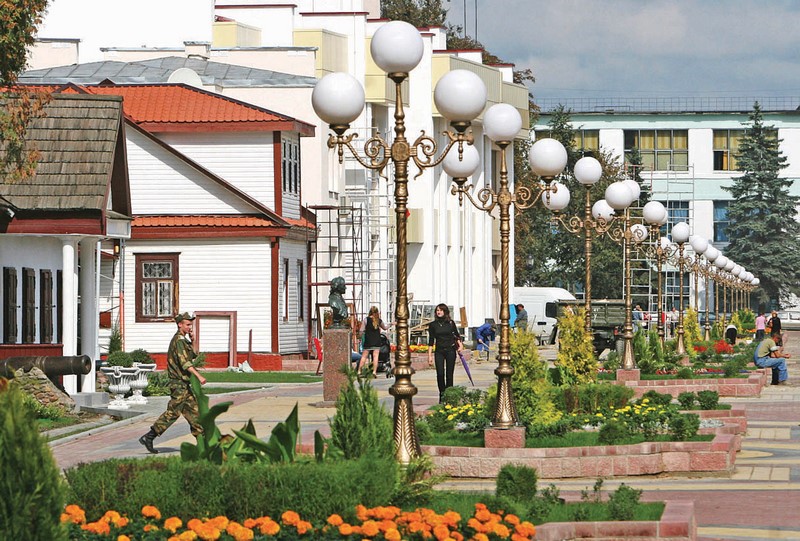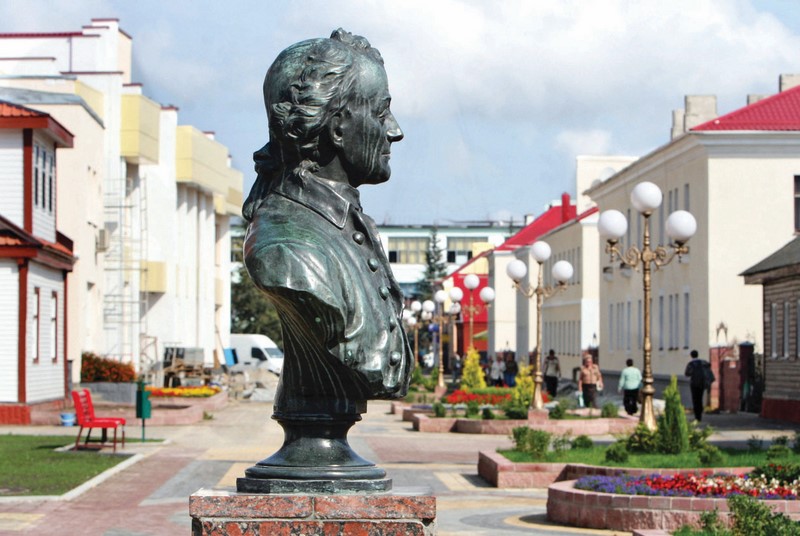
1 Spend time in Suvorov’s favourite places
After the third division of the Rzecz Pospolita in 1795, Empress Yekaterina II presented the estate Kobrinsky Klyuch (Kobrin Key) to field marshal Alexander Suvorov ‘in eternal hereditary possession’. In the military and historical museum, a mansion is devoted to the great commander; it belonged to Suvorov in the 18th century. Other exhibits are also likely to amaze visitors: the weapon room has collected rarities since the 15th century, many of them are unique. Among them are a German two-handled sword from the 16th century and a Sudayev submachine gun developed in besieged Leningrad.
The Suvorov Park is a nature sanctuary of the Republican style. It is truly old — being established in 1768. The park reflects the fashions of different eras. Five years ago, an aqua-park was built on the site.

2 Find reasons to read ‘Woe from Wit’
The Russian classic writer and author of the immortal ‘Woe from Wit’, Alexander Griboyedov, left his mark on the history of Kobrin. Being a cornet of Irkutsk Hussars, he stayed in the city in 1813 and his first literary attempts were connected with these places.
In 1939, the famous poet Alexander Tvardovsky lived here; he is known all over the globe owing to his Vasily Tyorkin.
An architect of the Russian Emperor Nicholas II — Semyon Sidorchuk — was also born locally. He made a major contribution to the construction of Tsarskoye Selo in the early 20th century. On the completion of the project, a church dedicated to the Mother of God icon — Satisfy Mine Grieves — was built in the residence of the Russian emperors. After the revolution in the 1920s, he restored bridges in the Brest Fortress. There are also streets in Kobrin named after Griboyedov and Tvardovsky; however, no street named after Sidorchuk is yet registered in the city.

3 Take a selfie by Napoleon’s gun
During the 1812 War, Russian troops — led by General Tormasov — gave the first defeat to Napoleon near Kobrin. A victorious volley was given from the walls of the Peter and Paul Fortress in St. Petersburg in honour of the event. A trophy — the enemy gun — is now situated in the city centre.

4 Pray in honour of soldiers
In 1868, the Alexander Nevsky Cathedral was constructed on the bank of the Mukhovets River, to honour the soldiers who died in the battles against Napoleon. In 2012, a monument was erected nearby to mark the 100th anniversary of the victory.
Another place of pilgrimage is the Spassky Convent; last year, it celebrated its 550th anniversary. It was founded by Kobrin’s Prince Ioann and his mother Iulianiya. Until recently, the buildings were occupied by the local police department but, six years ago, the monastery was returned to Orthodox believers.

5 Enjoy a ‘Northern’ oriental cherry
Kobrin is the land of lakes and pine forests. Accordingly, there are many spas around the city — often visited by Russians. There are also many hunting houses: holidaying, hunting and fishing are popular here. The city is rich in gardens. Tourists come here in spring to enjoy blossoming apricots and peaches similar to visitors to Japan who love the local oriental cherry flowers. Many plants — seen as exotic for our latitude — grow in Kobrin, with gardeners enjoying buying local frost-resistant seeds and plants.
By Valentina Kozlovich











